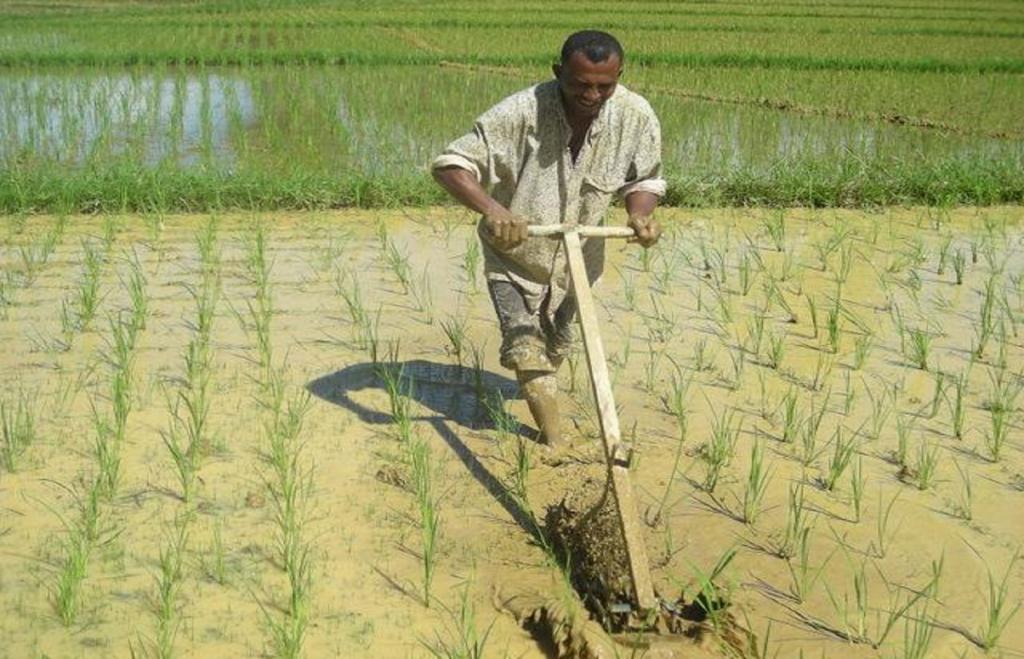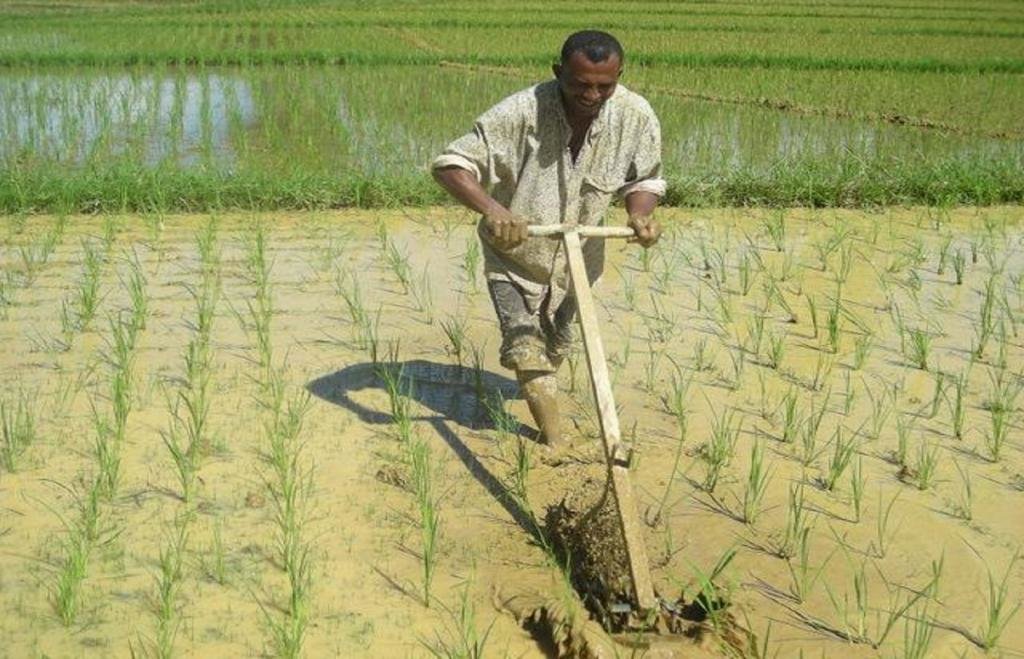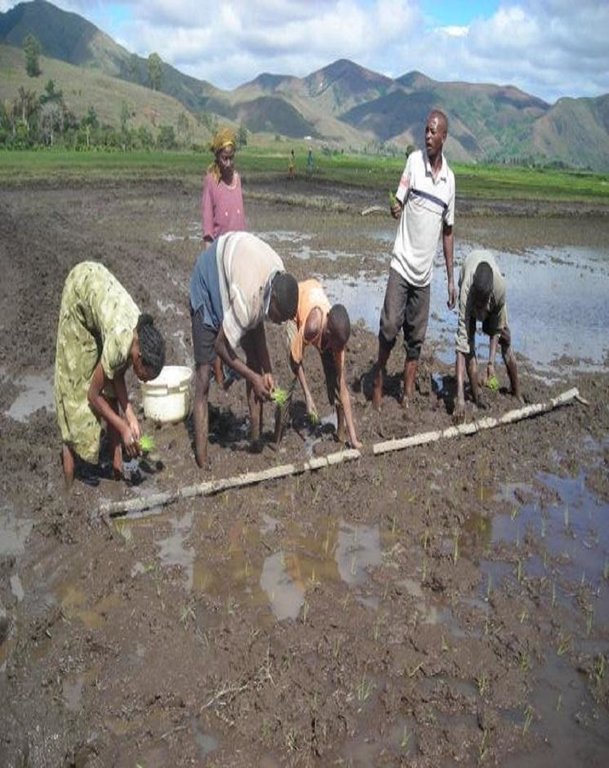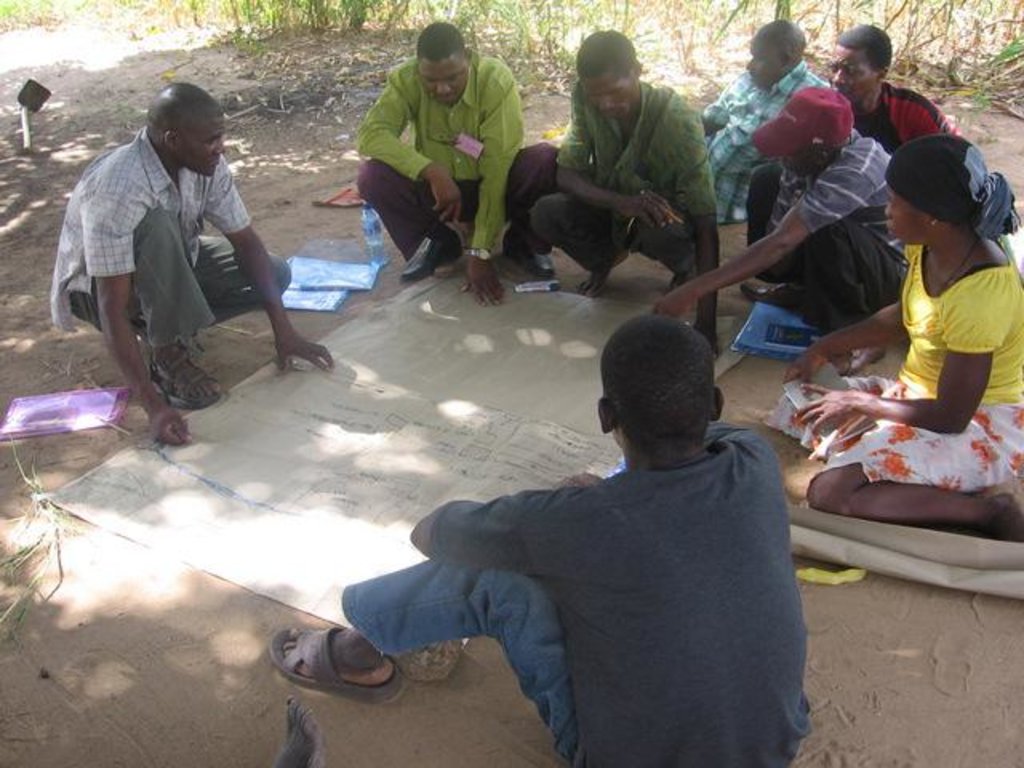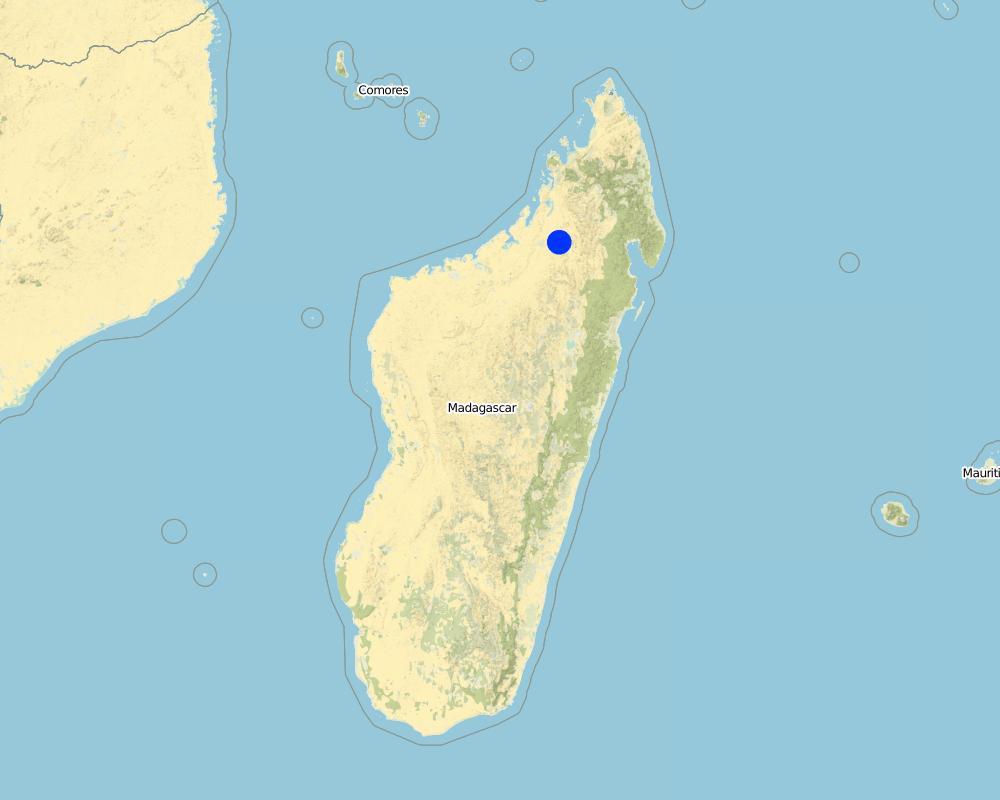Participatory Learning and Action Research approach to Integrated Rice Management [Мадагаскар]
- Создание:
- Обновить:
- Составитель: Unknown User
- Редактор: –
- Рецензент: Fabian Ottiger
approaches_2571 - Мадагаскар
Просмотреть разделы
Развернуть все Свернуть все1. Общая информация
1.2 Контактные данные специалистов и организаций, участвующих в описании и оценке Подхода
Agric. R&D consultant:
Defoer Toon
tdefoer@aliceadsl.fr
Najac, France
Франция
Специалист по УЗП:
Wopereis Marco
wopereis@cgiar.org.
Africa Rice Center
Cotonou
Бенин
Название организации (-ий), содействовавших документированию/оценке Подхода (если применимо)
CDE Centre for Development and Environment (CDE Centre for Development and Environment) - ШвейцарияНазвание организации (-ий), содействовавших документированию/оценке Подхода (если применимо)
Africa Rice Center (AfricaRice) - Кот-д'Ивуар1.3 Условия, регламентирующие использование собранных ВОКАТ данных
Составитель и ответственный/-ые специалист(-ы) согласны с условиями, регламентирующими использование собранных ВОКАТ данных:
Да
2. Описание Подхода УЗП
2.1 Краткое описание Подхода
The Participatory Learning and Action Research approach to Integrated Rice Management (PLAR-IRM) is a bottom-up, social and experiential learning approach, leading to sustainable agricultural improvements, based on mutual support and communication among farmers.
2.2 Подробное описание Подхода
Подробное описание Подхода:
Aims / objectives: Innovation and agricultural change is aimed for, through capacity strengthening of all major stakeholders involved in the rice sub-sector. IRM refers to the production system and value chain as a whole. Innovation is not limited to technological change; it also includes time management and the building of social networks and institutions for mutual collaboration between farmers and other stakeholders within the rice value chain. A step-wise, self-discovery learning mode encourages the stakeholders to find solutions for their own site-specific problems. During the first years, groups of 25-30 producers are supported by a programme facilitator who animates the learning and innovation sessions. The main instruments are the learning modules dealing with specific crop management practices, harvest and post-harvest practices (involving processors and entrepreneurs also), as well as the agro-ecological and socio-economic conditions of rice production. The sessions aim to strengthen farmers’ and other rice stakeholders' capacity to observe, analyze, interpret, make decisions, innovate and share knowledge and experiences. PLAR is based on locally relevant knowledge, practices and skills. Exchanges about current practices, and their logic or justification, are the starting point in all modules.
Methods: In a learning-by-doing approach farmers are encouraged to try out any new ideas identified during PLAR sessions on some parts of their fields reserved for new practices (“innovation space”). This allows them to assess the impact of such innovations on their rice yield, or on the profitability of rice growing and the rice business as a whole, and consequently to adapt and fine-tune the measures taken according to their needs. These innovation spaces are regularly visited as part of learning sessions for knowledge sharing between farmers. Since 2005, innovations in land preparation, early transplanting of seedlings, weeds and water management - basically without external inputs - have resulted in three times higher yields, benefitting thousands of farmers. Rice value chain activities started in 2008 with a view to empowering farmers' position within the chains and improving the competitiveness. Groups are unifying into PLAR centres with common marketing of rice, and contract input providers and rice processors.
2.3 Фотографии, иллюстрирующие Подход
2.5 Страна/ регион/ место, где применялся Подход
Страна:
Мадагаскар
Более точная привязка места:
Sofia Region
Map
×2.7 Тип Подхода
- в рамках проекта/ программы
2.8 Каковы цели/ задачи Подхода
The Approach focused mainly on SLM with other activities (value chain develop¬ment: collective storage and marketing of rice; contractual arrangements with input providers and rice processors)
Sustainably improving food security, livelihoods and incomes of poor rice farmers by boosting the profitability of rice production and increasing the efficiency and competitiveness of the rice sub-sector; Capacity strengthening of all stake-holders involved in the rice-subsector
The SLM Approach addressed the following problems: Low yields in rice production; Most farmers live below subsistence level; Absence of government and NGO support; Limited access to markets, lack of infrastructure
3. Участие и распределение ролей заинтересованных сторон
3.1 Заинтересованные стороны, участвующие в реализации Подхода и их роли
- местные землепользователи/ местные сообщества
rice farmers
marginalised poor rice farmers are targeted
- частный сектор
private service providers (e.g. input suppliers), rice processors and buyers
- местные власти
- международные организации
Aga Khan Foundation
3.2 Участие местных землепользователей/ местных сообществ на разных стадиях реализации Подхода
| Участие местных землепользователей/ местных сообществ | Перечислите участников и опишите их вовлеченность | |
|---|---|---|
| инициирование/ мотивация | интерактивное | |
| планирование | интерактивное | |
| выполнение | интерактивное | |
| мониторинг/ оценка | нет | |
| Research | нет |
3.4 Принятие решений по выбору Технологии/ Технологий УЗП
Укажите, кто принимал решение по выбору применяемой Технологии/ Технологий:
- исключительно землепользователи (по собственной инициативе)
Поясните:
Decisions on the method of implementing the SLM Technology were made by mainly by land users supported by SLM specialists
4. Техническая поддержка, повышение компетенций и управление знаниями
4.1 Повышение компетенций/ обучение
Проводилось ли обучение землепользователей/ других заинтересованных лиц?
Да
Укажите, кто проходил обучение:
- землепользователи
- местный персонал/консультанты
Тип обучения:
- в ходе работы
- обмен опытом между фермерами
Рассматриваемые темы:
crop management practices, harvest and post-harvest practices (incl. storage, marketing), socio-economic and ecological conditions of rice farming; curriculum based on needs assessment
4.2 Консультационные услуги
Есть ли у землепользователей возможность получать консультации?
Да
Укажите, где именно оказываются консультационные услуги:
- на полях землепользователей
Описание/ комментарий:
Name of method used for advisory service: modular learning sessions guided by a facilitator, farmer-to-farmer extension; Approach is based on indigenous knowledge
4.5 Научные исследования
Были ли научные исследования частью Подхода?
Да
Напишите подробнее и назовите тех, кто выполнял исследования:
crop management practices
Research was carried out on-farm
5. Финансирование и внешняя материальная поддержка
5.1 Годовой бюджет мероприятий по УЗП в рамках Подхода
Если точный годовой бюжет неизвестен, укажите примерный диапазон затрат:
- 100 000-1 000 000
Комментарий (например, основные источники финансирования/ ключевые доноры):
Approach costs were met by the following donors: international: 10.0%; national non-government: 30.0%; private sector: 10.0%; local community / land user(s): 50.0%
5.2 Финансирование и внешняя материальная поддержка, предоставляемая землепользователям
Предоставлялась ли землепользователям финансовая/ материальная поддержка для применения Технологии /Технологий?
Да
5.3 Субсидии на отдельные затраты (включая оплату труда)
- оборудование
| Укажите, какие ресурсы были субсидированы | В какой степени | Опишите субсидии подробнее |
|---|---|---|
| инвентарь/ инструменты | профинансированы полностью | Two sarcleuses (weeding equipment) per starting group are provided for free and remain property of the group |
Комментарии:
Two sarcleuses (weeding equipment) per starting group are provided for free and remain property of the group
5.4 Кредитование
Предоставлялись ли в рамках Подхода кредиты на мероприятия УЗП?
Да
Укажите условия предоставления (процент, окупаемость и т.д.):
Interest rate charged: 2.5%; repayment conditions: Was supported by the approach in collaboration with an existing microfinance institution; loan period: 6-8 months, 2.5% monthly (!) interest rate.
6. Анализ влияния и заключительные положения
6.1 Влияние Подхода
Сумел ли Подход помочь землепользователям внедрить и поддерживать технологии УЗП?
- Нет
- Да, немного
- Да, умеренно
- Да, существенно
yields have increased by > 200% (on innovation spaces)
Сумел ли Подход расширить возможности социально и экономически уязвимых групп?
- Нет
- Да, немного
- Да, умеренно
- Да, существенно
marginalised poor rice farmers are targeted
Did other land users / projects adopt the Approach?
- Нет
- Да, немного
- Да, умеренно
- Да, существенно
from 2005-2009 PLAR groups have increased from 6 up to 102, involving 3782 families and extended to 4200 non grouped farmers
Did the Approach help to alleviate poverty?
- Нет
- Да, немного
- Да, умеренно
- Да, существенно
SLM practices result into a net benefit of > 700 US$/ha
6.2 Основные причины, побуждающие землепользователей внедрять УЗП
- рост продуктивности
- рост прибыли (доходности) и рентабельности
- причастность к движению/ проекту/ группе/ сети
6.3 Долгосрочная устойчивость мероприятий в рамках Подхода
Могут ли землепользователи самостоятельно (без внешней поддержки) продолжать применение того, что было реализовано в рамках Подхода?
- да
Если да, опишите как:
In a 2nd phase farmers who are organised in PLAR groups gradually build up the capacity to manage the innovation and mutual learning approach on their own without programme support: Farmers facilitators are trained to take over the lead of PLAR groups with backstopping from programme facilitators.
6.4 Сильные стороны/ преимущества Подхода
| Сильные стороны/ преимущества/ возможности по мнению составителя или других ключевых специалистов |
|---|
| Farmers learn basic principles of rice management and develop their own locally adapted options for improvements; the innovation comes from inside the groups. |
| Farmers build up individual and organisational capacity to find solutions to their problems and build confidence as efficient partners with other value chain actors. |
6.5 Слабые стороны/ недостатки Подхода и пути их преодоления
| Слабые стороны/ недостатки/ риски по мнению составителя или ответственных специалистов | Возможные пути их преодоления/снижения? |
|---|---|
| Labour intensive improvements | provision of group credit to PLAR group members in collaboration with a local microfinance institution |
| Learning intensive approach, with regular group learning sessions | PLAR groups elaborate their own learning programmes and curricula according to their availability and needs |
7. Справочные материалы и ссылки
7.1 Методы сбора/источники информации
- выезды на места, полевые обследования
- опросы землепользователей
7.2 Ссылки на опубликованные материалы
Название, автор, год публикации, ISBN:
Defoer T., M. Wopereis, S. Diack, and P. Idinoba. 2008. Apprentissage participatif et recherche action pour la gestion intégrée du riz à Madagascar: Manuel du facilitateur AKF, Genève, Suisse. Defoer T., M. Wopereis, P. Idinoba T. and Kadisha. 2006. Participatory Learning and Action Reseaerch (PLAR) for Integrated Rice Management in inland valleys in sub-saharan Africa: Facilitators’ manual. WARDA- the Africa Rcie Center, Bouaké, Côte d’Ivoire.
Название, автор, год публикации, ISBN:
Defoer T., M. Wopereis, P. Idinoba T. and Kadisha. 2006. Participatory Learning and Action Reseaerch (PLAR) for Integrated Rice Management in inland valleys in sub-saharan Africa: Facilitators’ manual. WARDA- the Africa Rcie Center, Bouaké, Côte d’Ivoire.
Ссылки и модули
Развернуть все Свернуть всеСсылки
Нет ссылок
Модули
Нет модулей


